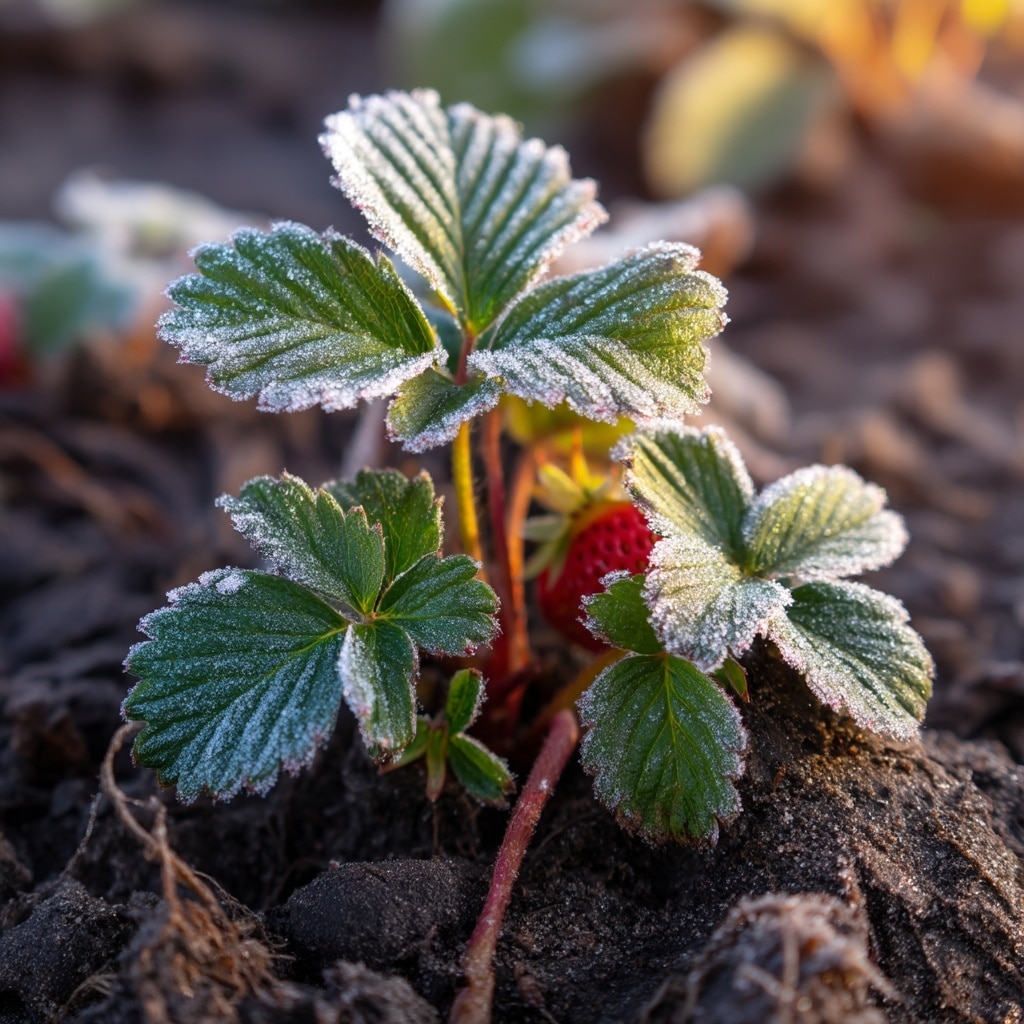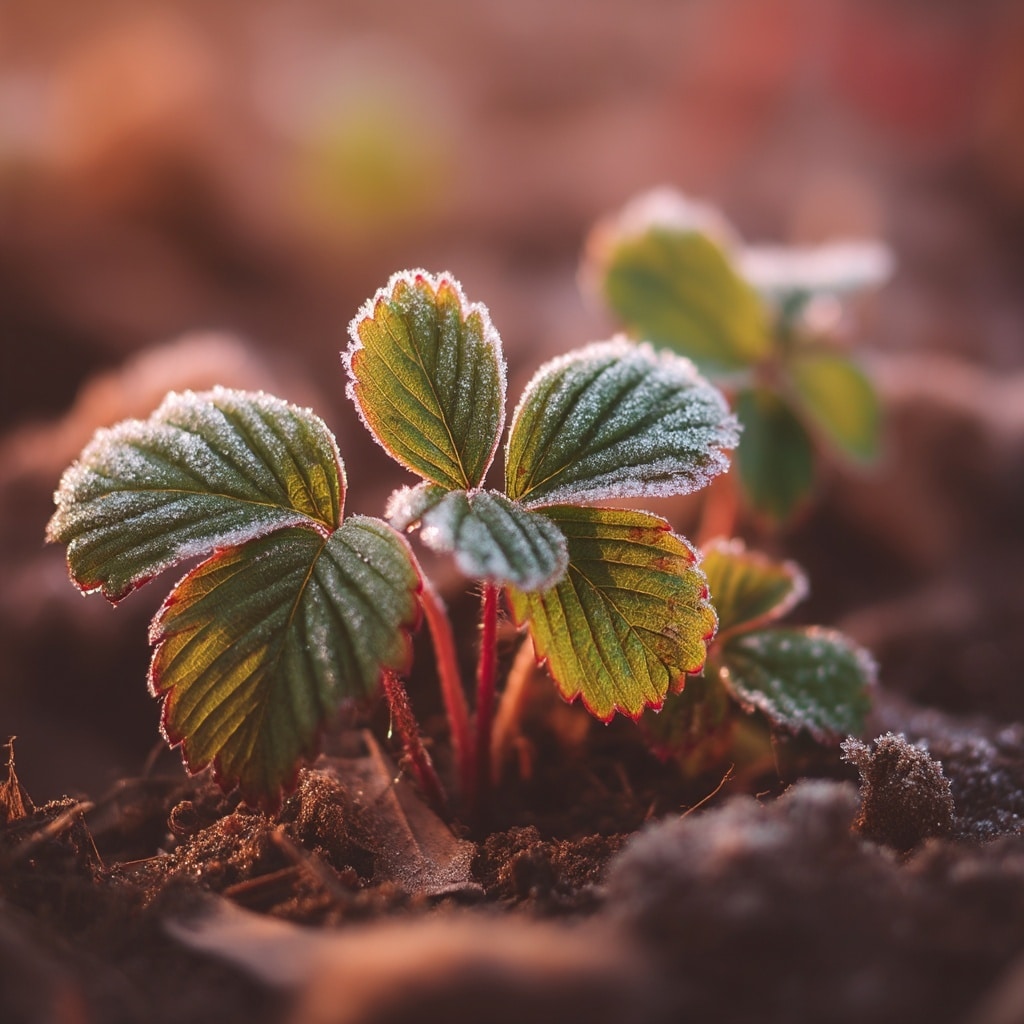Strawberry plant care doesn’t stop at the end of harvest season. As temperatures dip and frost settles in, giving your strawberry patch the right protection can mean the difference between a thriving spring crop and a disappointing one. Whether you’re growing in garden beds or containers, knowing how to properly winterize your strawberry plant is essential for its survival and future fruiting. In many regions, these hardy perennials can endure cold spells, but without a little preparation, freezing conditions can damage the roots, crowns, and buds. With a few easy steps, you can ensure your strawberry plant returns healthier and more productive when the warmer months roll around.
Table of Contents
Why Winterizing Strawberry Plants Matters
Even though a strawberry plant is naturally resilient, cold weather can pose serious threats if the proper steps aren’t taken. In areas where temperatures frequently fall below 15°F, unprotected plants may not survive the season. But it’s not just about survival—winter damage can directly affect your next harvest.
Most varieties form their fruit buds in the summer and fall. These buds are vulnerable to freezing temperatures and frost heave, a condition where fluctuating soil temperatures push plant crowns above ground. When that happens, roots dry out or freeze, and the entire strawberry plant can fail to bounce back in spring.
Winterizing helps insulate the plant’s crown and root system, keeps soil temperatures more stable, and preserves next season’s berry-producing buds. For gardeners in USDA zones 4 and up, giving your strawberry plant some extra care before winter is one of the best ways to protect your investment and enjoy a strong return of berries when spring arrives.
When to Winterize Strawberry Plants

Timing is everything when it comes to preparing your strawberry plant for winter. Start too early, and you risk trapping excess moisture, which can lead to crown rot. Start too late, and the plant may already be damaged by cold snaps or frost heave. So, how do you get it right?
Begin the process once your strawberry plant finishes fruiting, typically in mid to late summer. This is the time to prune, fertilize, and clean up your beds. However, mulching—the most critical part of winter protection—should wait until after the first hard frost.
In most regions, the sweet spot for mulching falls between late November and early December, when daytime temperatures consistently stay in the 20s and the top inch of soil is frozen. If you’re in a milder zone, like USDA 7 or warmer, wait until nighttime temps drop into the low 40s and the foliage starts to wilt or turn brown.
Watch your strawberry plant closely. Floppy leaves and slow growth are natural signals that dormancy is setting in. That’s your cue to begin mulching or covering them for winter.
How to Winterize Strawberry Plants
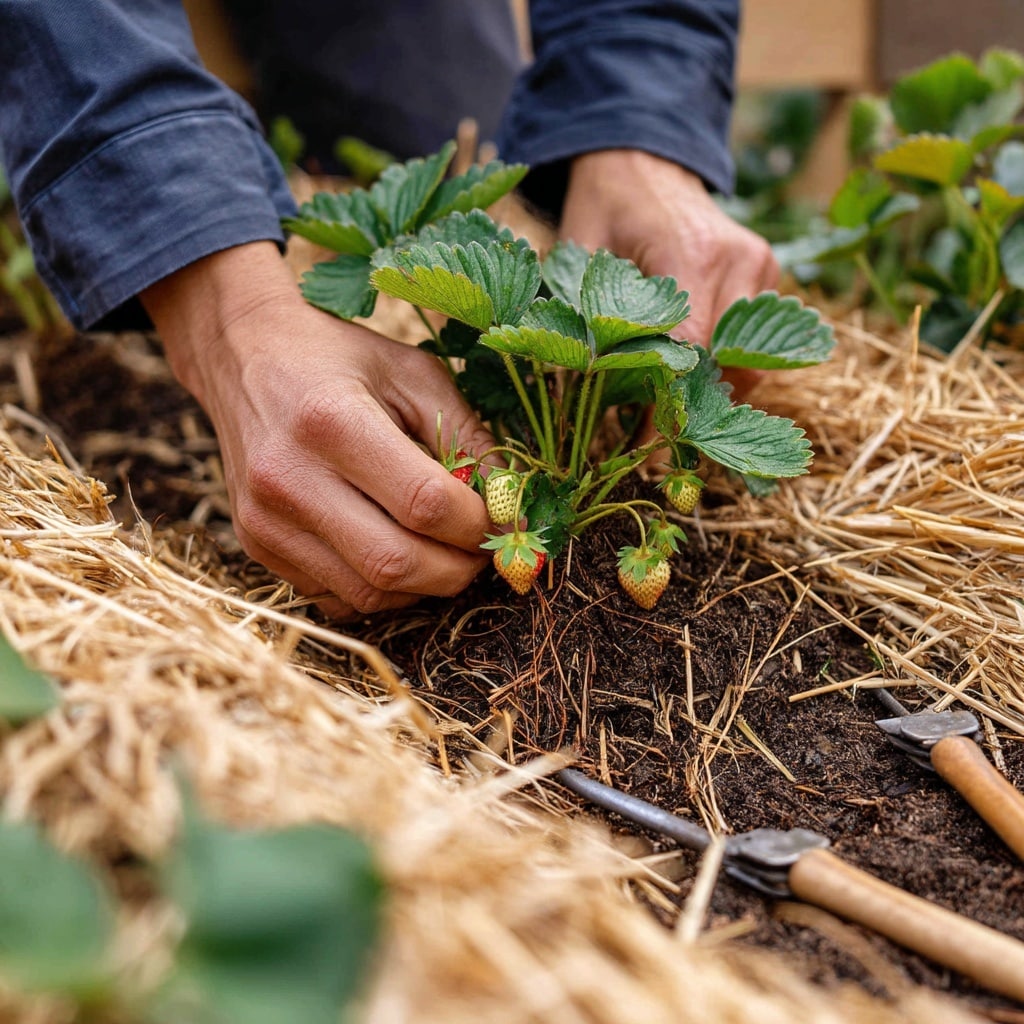
Giving your strawberry plant the best chance at thriving next season starts with a simple three-step winter prep routine: renovate, fertilize, and mulch. Whether you’re tending a raised bed or container, these actions will protect your plants and set the stage for a healthy, fruit-filled spring.
Step 1: Renovate Your Strawberry Plant

After the final berries are picked—usually by mid to late summer—it’s time to clean up your strawberry plant. Renovation helps remove disease-prone material, encourages airflow, and creates space for new growth.
For June-bearing varieties, cut plants back to about 1½ inches above the crown. This can be done with shears or a lawn mower for larger patches. Be careful not to damage the crown, as it’s the heart of the plant.
If your bed is overcrowded, thin the runners so each strawberry plant is spaced 4 to 6 inches apart. This prevents fungal issues and gives each plant room to grow strong roots.
For everbearing and day-neutral varieties, renovation is simpler—just trim off dead leaves and stems, and pull any weeds. Avoid hard pruning, as these types continue producing into fall.
Step 2: Fertilize for Next Season

Once renovation is complete and your plants have recovered for a few weeks, apply fertilizer in early fall—ideally about a month before your region’s first frost.
Choose a balanced, slow-release granular fertilizer. A good rule of thumb is 1 pound of fertilizer per 25 plants. Read your product label and follow instructions carefully to avoid overfeeding.
This nutrient boost gives your strawberry plant the energy to form strong roots and next season’s fruit buds before winter sets in. Avoid high-nitrogen formulas that encourage leaf growth over fruit production.
Step 3: Mulch for Winter Protection
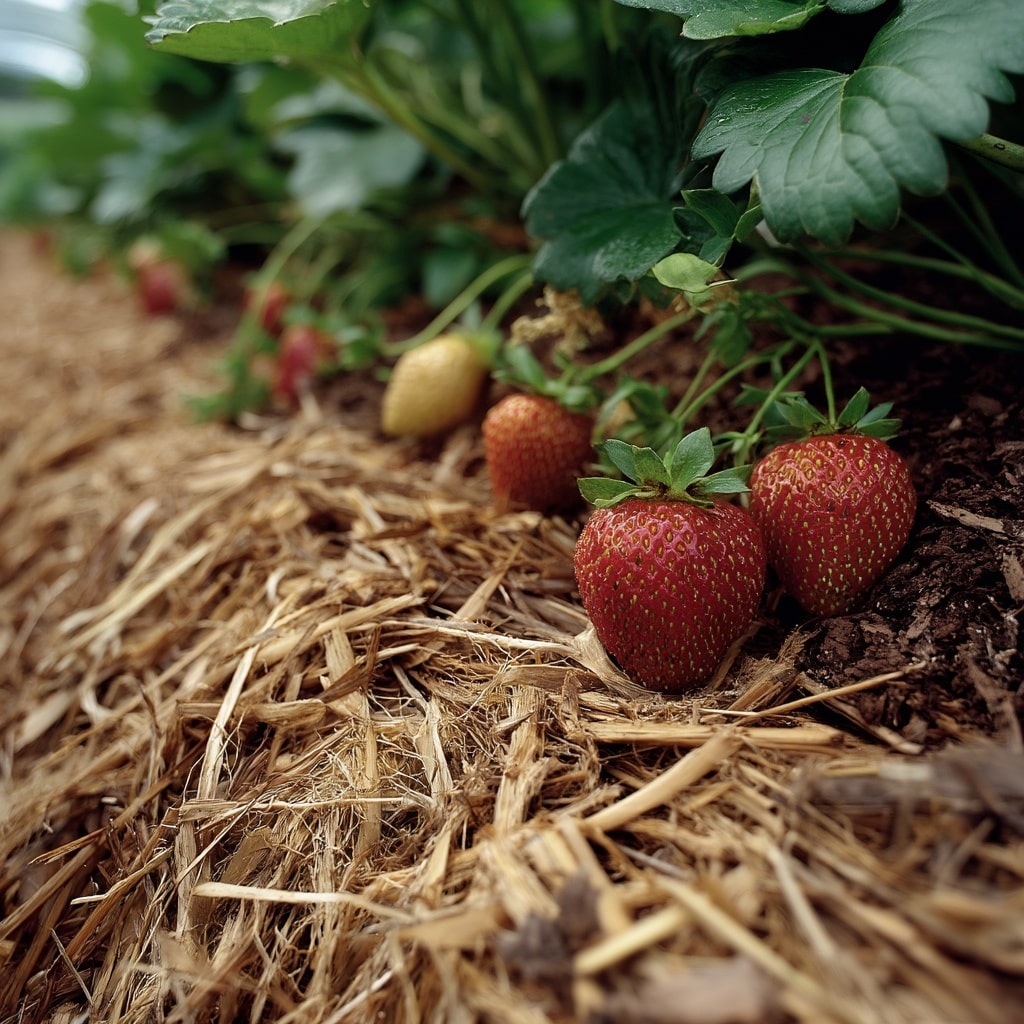
As temperatures drop and your strawberry plant begins to go dormant, it’s time to mulch. This layer acts like a blanket, protecting the crown and roots from extreme cold and reducing freeze-thaw cycles in the soil.
Use light, breathable mulch like weed-free straw, pine needles, or salt marsh hay. Avoid dense materials such as wet leaves or grass clippings, which can trap moisture and cause rot.
Apply 3 to 5 inches of mulch loosely over the tops of the plants. Make sure all leaves are covered, but don’t pack it down tightly—airflow is essential to prevent disease.
Prefer something reusable? You can opt for frost protection fabric, but be aware that it may cause early leaf-out in spring. Keep an eye on your plants and be ready to re-cover them if a late frost arrives.
How to Winterize Potted Strawberry Plants

If you’re growing your strawberry plant in a pot, winter care looks a little different—but it’s just as important. Containers expose roots to air on all sides, making them more vulnerable to freezing than plants grown in the ground. Without protection, a potted strawberry plant may not survive even a mild winter.
Start by following the same early steps: renovate after fruiting and apply fertilizer in early fall. Once your strawberry plant shows signs of dormancy—droopy or browning leaves—it’s time to protect both the plant and the pot.
In regions with mild winters, potted strawberries can often remain outdoors. Just wrap the container in an insulating material like burlap, old blankets, or bubble wrap to shield roots from the cold. Then mound 6 to 8 inches of straw or pine needles over the top of the plant.
In colder zones, move containers into a sheltered, unheated space, such as a garage, shed, or covered porch. These spots stay cold enough to maintain dormancy but protect your strawberry plant from harsh winds and extreme drops in temperature.
During winter, don’t overwater. A dormant strawberry plant doesn’t need much moisture. Check the soil once a month, and give a light watering only if it’s completely dry.
Come spring, your potted strawberry plant will be ready to bounce back—provided it stayed cool, dry, and protected throughout the colder months.
Spring Recovery Tips for Strawberry Plants
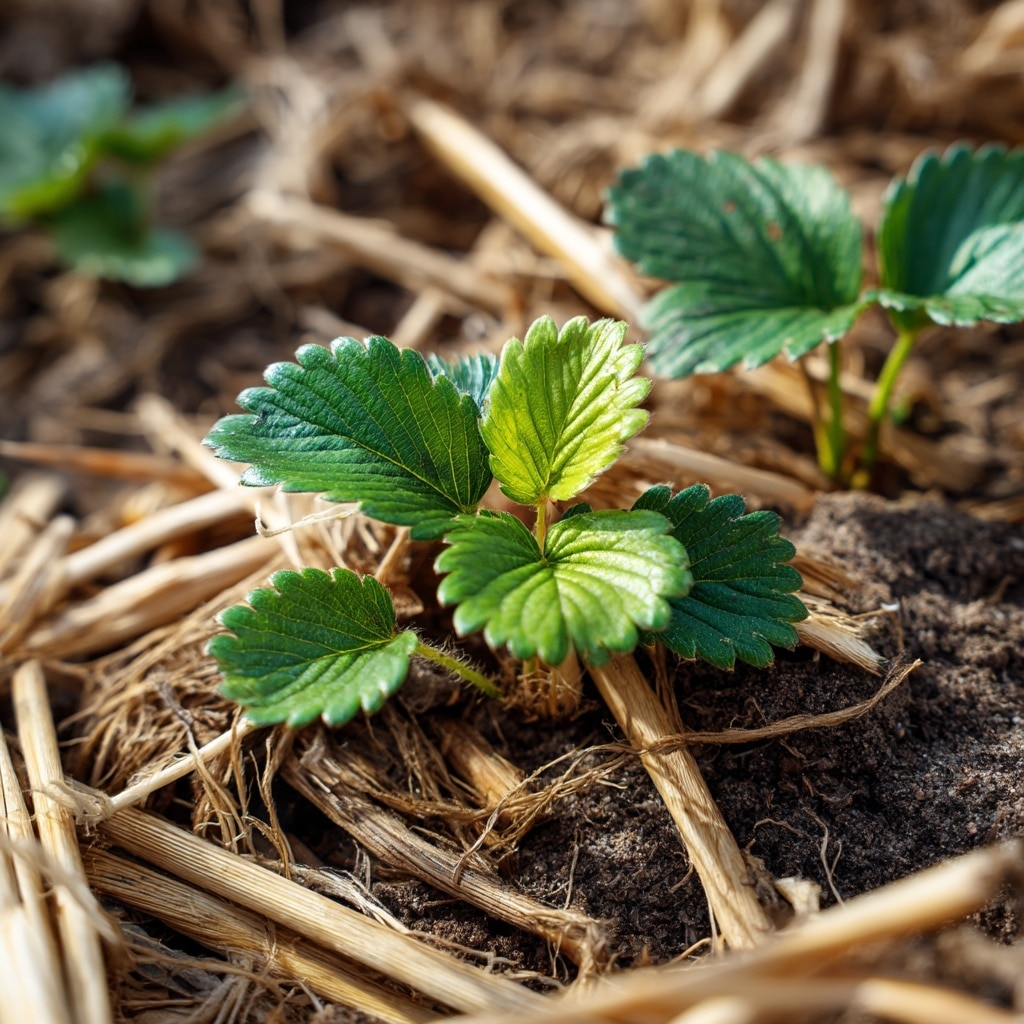
As winter fades and warmer days return, your strawberry plant will begin to show signs of life. Getting this transition right is just as important as winter prep. Watch closely for the first green shoots poking through the mulch—this is your signal to begin spring cleanup.
Start by gently pulling back the mulch once daytime temperatures stay consistently above freezing. Don’t remove it all at once—keep some on hand to cover plants again if a late frost rolls in. This is especially important for early-leafing varieties or those in containers that might be more exposed.
Avoid compacting the soil while working around your strawberry plant in early spring. Wet soil is vulnerable to compaction, which can hinder root growth and drainage. Instead, step lightly and use a handheld tool to fluff up the mulch and soil gently.
Repurpose the mulch you remove by using it between rows or around other plants to suppress weeds and retain moisture. It’s an easy way to recycle while keeping your garden tidy.
If your strawberry plant was covered with frost fabric, uncover it fully once leaf growth becomes steady. At this point, switch to your normal watering and feeding schedule, and enjoy watching your plants burst back into action—stronger and more fruitful than ever.
Conclusion
Winter may be tough on your garden, but with a little planning and care, your strawberry plant doesn’t just survive—it thrives. Whether it’s nestled in a raised bed or a patio container, proper winterization protects delicate roots, preserves fruit buds, and ensures a vibrant return when spring arrives.
By renovating after harvest, fertilizing in fall, and applying the right mulch at the right time, you’ll set your strawberry plant up for a more productive season ahead. Don’t skip these essential steps—and your reward will be juicy, homegrown berries that taste like summer.

